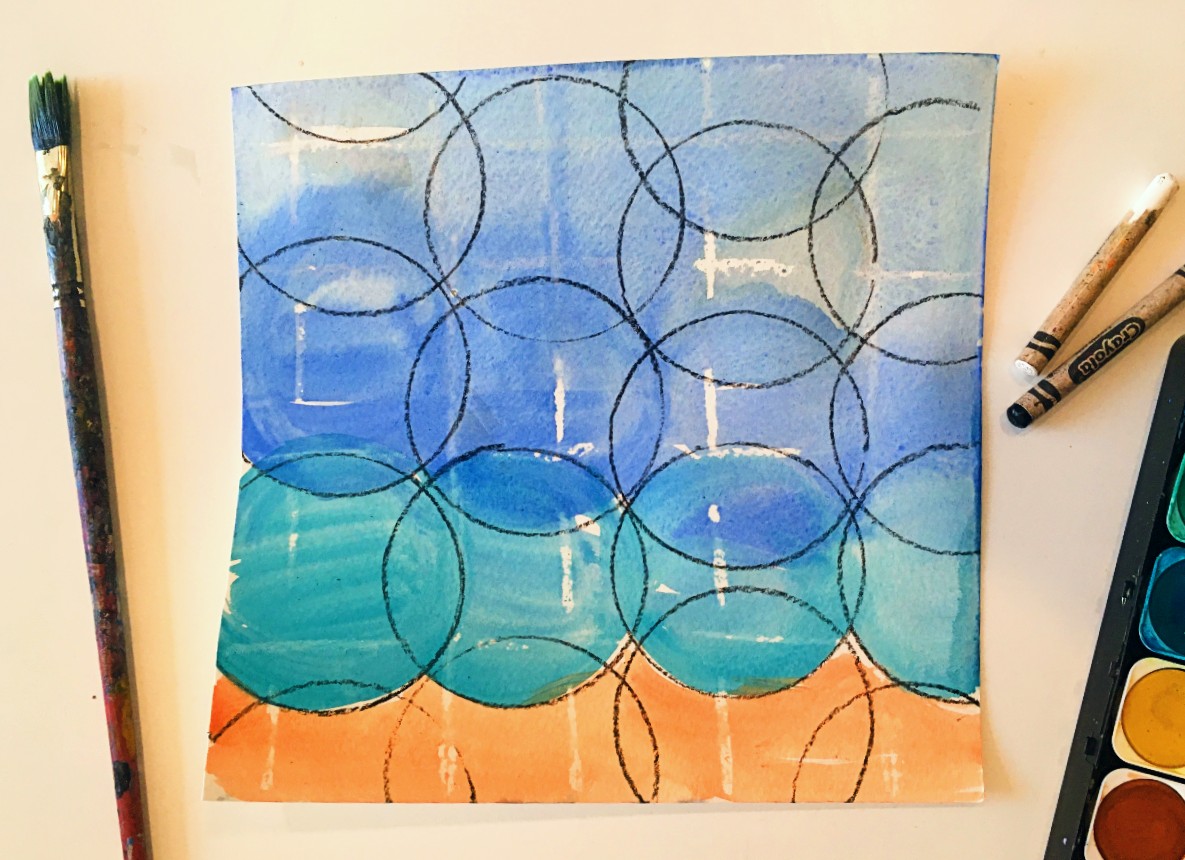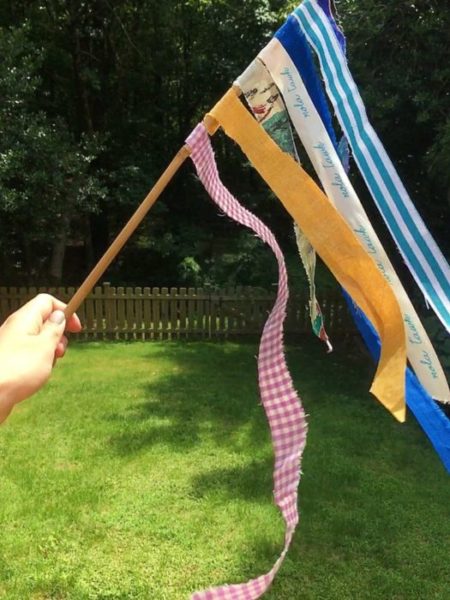Family Activities: Wind Sculpture II (Quick Tip)
By Courtney Klemens, Manager of Family Programs
Create
Wax resist.

What shapes can you find in the bold, colorful geometry of Wind Sculpture II? What lines? The design of these components refers to African wax cloth. It is created by using a printing block to apply waxy resin to cloth. Then, fabric dyes saturate the cloth with color, except for where the resin resists the dye. You can try your own resist techniques at home using crayons and watercolor paint! Draw geometric patterns on a piece of watercolor paper with black and white crayons; these colors will have the biggest impact. Then, paint all over the paper with watercolor paint to reveal the areas where the waxy crayon resists the colors.
Fabric boats.

Yinka Shonibare creates many works of art that incorporate African wax cloth, a fabric with a global history. These brightly colored cloths are popular across Western Africa, but originated in the Netherlands to be sold in Indonesia. Wind Sculpture II, and other works of art like Nelson’s Ship in a Bottle. Make a fabric boat that could take its own global journey! Gather sticks or scraps of wood to create the frame of your boat. Use hot glue to attach a skinny stick vertically to the larger base. Then, cut triangles of colorful fabric or patterned for sails and glue to the mast. Where will your boat travel first?
Move with the wind.

The magic of Wind Sculpture II is that it makes a hard material—fiberglass—appear to be soft like fabric. Can you see how the shape bends and twists? You can create a sculpture of your own that moves in the wind or with your body. First, gather fabric and cut long strips. You can also add ribbon and string in other thicknesses for variety. Use hot glue or tie knots to attach your strips to a dowel or stick. Watch how your fabric sculpture moves with the wind by sticking it in the ground on a windy day. Or, hold onto it and run or dance! How do the strips of fabric move around you?
